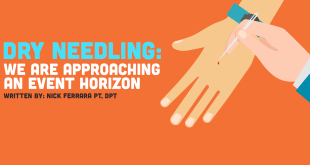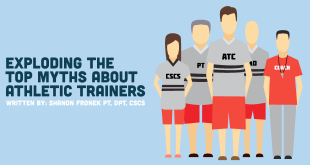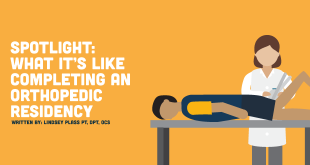What is Canine Rehabilitation?
Canine rehabilitation is a specialized field of veterinary medicine focused on improving the physical well-being of dogs through various therapeutic techniques. This approach is similar to physical therapy for humans and is designed to help dogs recover from injuries, surgeries, and chronic conditions. By addressing the root causes of mobility issues, pain, and other health concerns, canine rehabilitation aims to enhance the quality of life for our furry friends.
Importance of Canine Rehabilitation
Rehabilitation is crucial for dogs experiencing:
- Post-surgical recovery
- Arthritis and other joint issues
- Muscle injuries
- Neurological disorders
- Obesity-related health problems
By providing targeted treatments, canine rehabilitation helps in reducing pain, restoring mobility, and preventing further injuries.
Who Needs Canine Rehabilitation?
Dogs of all ages and breeds can benefit from rehabilitation. It is especially beneficial for:
- Senior dogs with mobility issues
- Dogs recovering from surgeries like ACL repairs or hip replacements
- Dogs suffering from chronic conditions such as arthritis or hip dysplasia
- Overweight dogs needing a structured weight loss program
- Active dogs prone to sports injuries
Identifying the Need
Common signs that a dog may need rehabilitation include:
- Limping or lameness
- Difficulty standing up or lying down
- Reluctance to climb stairs or jump
- Decreased activity level
- Visible pain or discomfort
If you notice any of these signs, consulting a veterinarian specializing in canine rehabilitation is a wise step.
The Rehabilitation Process
Initial Assessment
The journey to recovery starts with a comprehensive assessment by a veterinary rehabilitation specialist. This involves:
- Reviewing medical history
- Conducting a physical examination
- Evaluating the dog’s gait and movement
- Identifying specific areas of pain or discomfort
Diagnostic Tools
Advanced diagnostic tools such as X-rays, MRI, or ultrasound may be used to get a detailed understanding of the dog’s condition.
Developing a Customized Plan
Based on the assessment, a personalized rehabilitation plan is created. This plan includes:
- Specific therapeutic exercises
- Manual therapies
- Pain management strategies
- Nutritional guidance
Goal Setting
Setting realistic goals is a critical component of the rehabilitation plan. Goals may include:
- Pain reduction
- Improved mobility
- Enhanced muscle strength
- Weight management
Techniques in Canine Rehabilitation
Therapeutic Exercises
Therapeutic exercises are designed to improve strength, flexibility, and range of motion. These exercises may include:
- Controlled walking or trotting
- Balance and coordination activities
- Stretching exercises
Home Exercises
Pet owners are often given exercises to perform at home to complement in-clinic therapy sessions.
Hydrotherapy
Hydrotherapy, or water therapy, is a popular technique in canine rehabilitation. It includes:
- Underwater treadmill sessions
- Swimming in a controlled environment
Benefits of Hydrotherapy
The buoyancy of water reduces stress on joints while providing resistance to strengthen muscles.
Manual Therapies
Manual therapies involve hands-on techniques such as:
- Massage therapy
- Joint mobilization
- Stretching
Chiropractic Care
Some rehabilitation programs may also include chiropractic adjustments to realign the spine and improve nervous system function.
Pain Management in Canine Rehabilitation
Medication
Pain management often involves the use of medications such as:
- Nonsteroidal anti-inflammatory drugs (NSAIDs)
- Opioids for severe pain
- Muscle relaxants
Monitoring and Adjustments
Regular monitoring ensures that the pain management plan remains effective and adjustments are made as needed.
Non-Medication Therapies
Non-medication options include:
- Acupuncture
- Laser therapy
- Electrical stimulation
Integrative Approaches
Combining multiple pain management techniques often yields the best results.
The Role of Nutrition in Rehabilitation
Diet and Supplements
Proper nutrition plays a vital role in rehabilitation. This includes:
- High-quality, balanced diet
- Supplements such as glucosamine and chondroitin for joint health
- Omega-3 fatty acids for anti-inflammatory benefits
Weight Management
Maintaining a healthy weight reduces stress on joints and supports overall recovery.
Hydration
Ensuring adequate hydration is essential, particularly when engaging in physical therapy activities.
Monitoring Progress
Regular Check-Ins
Frequent check-ins with the rehabilitation specialist are crucial to monitor progress and make necessary adjustments.
Tracking Milestones
Progress is tracked through:
- Regular physical exams
- Gait analysis
- Pain and mobility assessments
Adjusting the Plan
As the dog progresses, the rehabilitation plan may be adjusted to introduce new exercises or therapies to continue improving their condition.
Long-Term Maintenance
Even after the initial rehabilitation goals are achieved, ongoing maintenance exercises and therapies may be recommended to prevent recurrence of issues.
The Impact of Canine Rehabilitation
Enhancing Quality of Life
Effective rehabilitation significantly enhances a dog’s quality of life by:
- Reducing pain
- Restoring mobility
- Improving overall health
Strengthening the Bond
The rehabilitation process often strengthens the bond between dogs and their owners through shared activities and mutual support.
Success Stories
Many dogs have successfully regained their mobility and vitality through rehabilitation, showcasing the transformative power of this specialized care.
How to Choose a Rehabilitation Specialist
Credentials and Experience
When selecting a rehabilitation specialist, consider:
- Certifications in veterinary rehabilitation
- Experience with specific conditions
- Client testimonials and success stories
Facility and Equipment
Ensure the facility is equipped with modern rehabilitation tools and technologies.
Personalized Approach
Choose a specialist who offers a personalized approach tailored to your dog’s unique needs and condition.
 NewGradPhysicalTherapy.com The Largest Online Resource For New Grad Physical Therapists
NewGradPhysicalTherapy.com The Largest Online Resource For New Grad Physical Therapists





